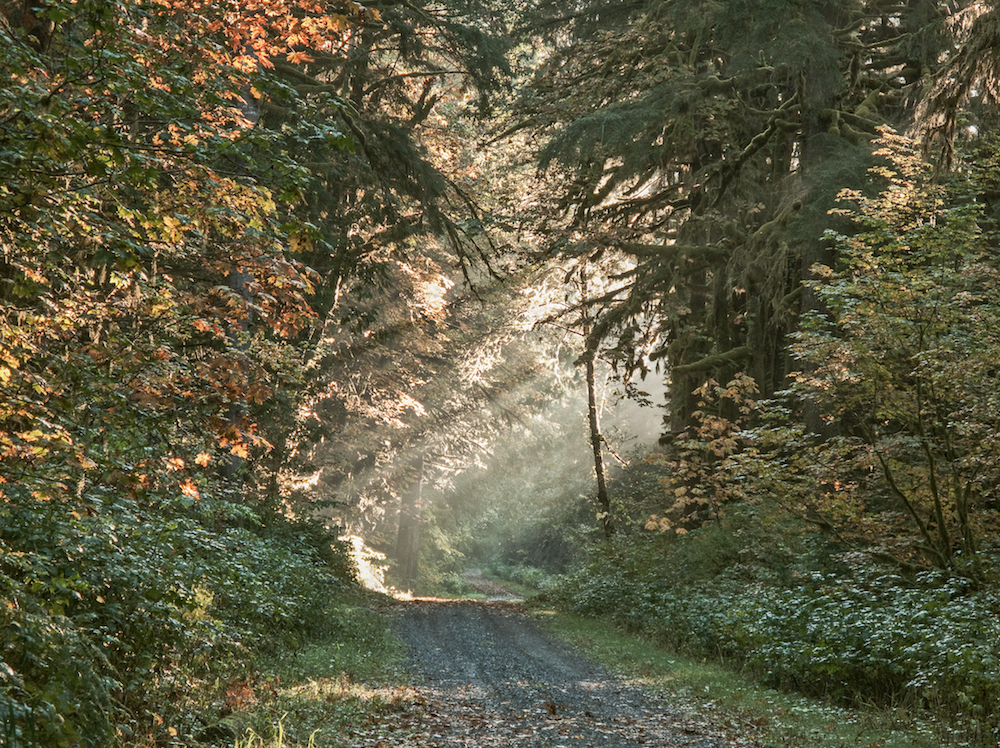 From The Essence of Photography by Bruce Barnbaum
From The Essence of Photography by Bruce Barnbaum
Achieving Inspiration from Daily Life
Have you ever thought of finding photographic inspiration and valid subject matter in the place where you spend much of your day? Is there any aspect of your daily work that is of visual interest to you? Do you work with others in an office, store, laboratory, or some other place where you may have the opportunity to photograph those working with you? I know of medical doctors who have asked their patients if they would be willing to be photographed. In many cases, the patients are not only willing to pose, but are actually thrilled that their doctor has taken such deep interest in them.
Can you photograph in your workplace? Sometimes it takes a little tenacity to get past the barrier of a boss saying no, but maybe in time they’d give it a second thought and allow some photography. Perhaps your work takes you outdoors, where you may be able to do some photography along with your activities. Whether you work indoors or outdoors, look at the whole scene as well as the details. There may be a lot of wonderful photographic possibilities hidden within them.
Several years ago a medical doctor attended one of my workshops. He is a Vietnam War veteran who returns to the country each year to volunteer free medical work. At one of the print review sessions he put up a set of nicely mounted landscape images, and on the counter beneath them he laid down several unmounted portraits of patients he worked with in Vietnam. I suggested to the group that we first discuss the mounted landscape work. I purposely asked to review those images first, for reasons soon to become clear.

Photo by Bruce Barnbaum
After we reviewed the landscape work I turned to him directly and asked, “Why didn’t you mount the portraits? They mean so much more to you.” He immediately broke into tears.
Perhaps he thought that as a landscape photographer, I would be primarily—or even exclusively—interested in seeing landscapes. Perhaps he felt his hospital patient portraits would be viewed as uninteresting, extraneous images. That’s not my approach in my workshops. I try to look at all of the images that students present with an eye toward helping them improve their own vision, their own interpretation, their own goals. I’m not trying to produce clones of the type of work that I do. (First and foremost, of course, I don’t want or need the competition.)
We discussed this student’s portrait work for the next 45 minutes. Those photographs were, indeed, far more important to him. That was clear to me as he put his work up, and that’s why I suggested reviewing the landscapes first, recognizing that if we talked about the portraits first, we’d never get to the landscapes.
I recommended that he temporarily put the landscape work aside and concentrate on the patient portraits, placing them virtually on par with his medical services during his subsequent visits to Vietnam. Deep inside I suspect he knew that, but he had to hear that suggestion. So his inspiration was right in front of him in his line of work. Yours may be, too. I recommend you look into it. And if you already have but you dismissed it, look again, and look deeper.
Photographic Inspiration Near and Away from Home
Have you looked carefully around your home? Have you looked not only within your home, but at the entire structure itself, or at the neighborhood in which it’s located? You may walk around your home or neighborhood without ever noticing its photographic potential, but it’s worth giving it some thought. After all, you spend a lot of time there, and it may prove to be a treasure trove of opportunities.

Photo by Bruce Barnbaum
Ruth Bernhard, a fabulous photographer who died in her late 90s and is primarily known for her nude studies, once said, “You have to learn to take pictures within 15 feet of your bed.” Have you ever thought of doing that? Have you thought of taking pictures within 15 feet of your dining room table, kitchen counter, or living room? I encouraged many of my workshop students to attend one of Ruth’s workshops before she grew too old to do them anymore, and many did. One such student, who was fully involved in landscape photography, heard her comment and immediately said, “I can’t do that!” Ruth asked why not. He answered, “My bed is too heavy to carry out there!”
Most people don’t do too much photography until they travel. Often, they’ll be drawn to the people they see on the street in foreign countries. But how often are they drawn to people on the street in their own country, their own city, the nearby shopping center, or their own neighborhood? Based on what I’ve seen in 40 years of looking at student work in my workshops, it seems the answer is that people “over there” are interesting, but people “right here” are not.
Really? Maybe the answer is that they feel a bit scared about aiming their camera at folks on their home turf, but there’s some type of safety in doing so abroad. I’ve seen some awfully fascinating looking people wherever I’ve gone, so it seems to me that the opportunity lies equally here and there.
Too many people take walks around their location regularly but only take out their camera when they travel to somewhere like Yellowstone. I once heard a good photographer wryly comment that most people have a photographic button in their butt, and it has to be jiggled by at least 500 miles of travel before it turns on. I think there’s some truth to that observation. It’s worth trying to overcome the need to travel in order to photograph. In general, you have no more than three or four weeks of vacation travel each year, leaving you about 48 weeks of non-travel. Don’t put your camera away during those lengthy times at home. Look around you and open yourself up to the countless possibilities within reach.
Like this? Read more from The Essence of Photography and check out Bruce Barnbaum’s best-selling title, The Art of Photography!
The Essence of Photography is currently Rocky Nook’s eBook Deal of the Week. You can purchase the eBook for $9.99 with coupon code ESSENCE! here
